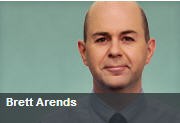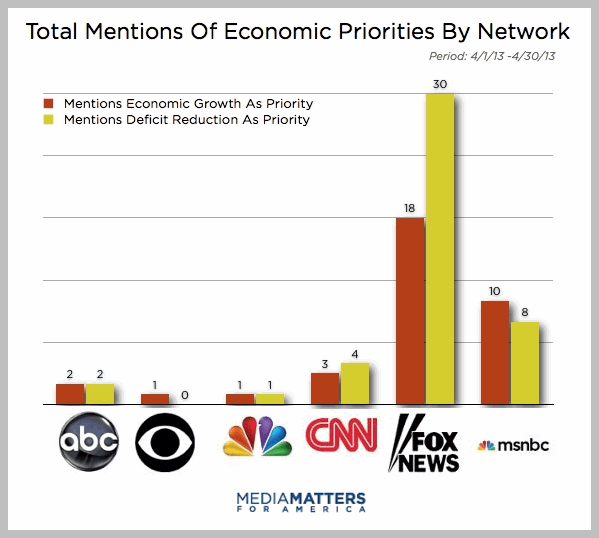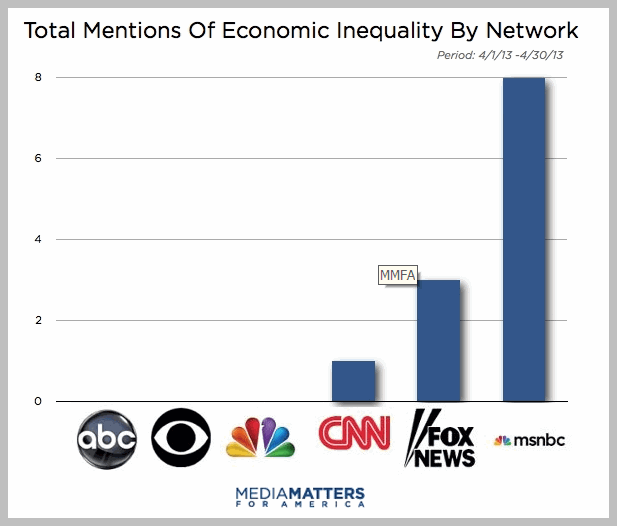Brett Arends has a very interesting post on MarketWatch – Why the NewsMedia is Worse Than You Think. He states his case succinctly:
There have been the high profile goofs — by CNN, in its coverage of the Boston bombings, and by Howard Kurtz, the famous media “critic,” in a blog post about gay athlete Jason Collins. The Tribune Company faces a potential takeover by the, er, colorful Koch brothers.And it all comes, with perfect timing, on the tenth anniversary of the exposure of Jayson Blair, the serial fabulist, at the New York Times.
It’s become a cliché these days to say you don’t trust the media. But you know what? You’re right not to do so.The problems aren’t as bad as they appear. They are much, much worse.
Arends advances five arguments as to why News Media today are bad:
1)Speed of the Never Ending Web News Cycle – the old cycle was once a week with major news magazines and once a day for newspapers. This allowed more time to get the story right. Now to compete with the likes of Twitter, Facebook and a thousand one immediate news blogs, major news organizations have little time to do the fact checking and journalist corroboration that marked their work from a decade or more ago. Things slip between the cracks.
2)The Current Press Economics – Arends is bitterly sharp here :
A media outlet recently advertised a job for “an experienced writer” with a “solid” record of publishing articles in outlets such as the New York Times, National Geographic and so on. Salary? The job was unpaid. The posting was reported by Jim Romenesko, the media writer. It was not an isolated incident. A major non-profit media outlet known to me is looking for columns from top-quality writers. The pay? Fifty bucks an item. Good luck with that. A liberal media doyenne [Ariana Huffington] praised President Obama for demanding an increase of the minimum wage, but doesn’t pay her bloggers anything at all.
The NYTimes turned the corner this year earning more from its online than print properties. But this has been 5 years of economically austere times for not just the NYTimes but most print media – online incomes are a fraction of their in-hand counterparts which are declining inexorably in circulation. This has meant cutbacks in staff and coverage and the outright shutting down of many newspapers and magazines. Coverage and nitty gritty investigative reporting has dwindled and suffered. ROI for stories must be in a week if not a day.
3)Compromise for News Access – Again, Arends is pointed and caustic.
In early 2007, when the subprime crisis first blew up, some executives at big mortgage lending companies were going around telling everyone that their companies were okay. But I reported at the time that several of these executives were also quietly dumping stock in their own companies as fast as they could. Six months later one of the companies had plunged into crisis and was sold off cheaply. The CEO was interviewed on TV about the industry. Not once — not once — did the big-name interviewer ask him about the way he had dumped his own stock.
There’s a reason the interviewer didn’t ask that question. It wasn’t her job. She wasn’t paid to break news. She was paid to get what the TV crowd calls “the big ‘get.’” In other words, she was paid to get access. Her job depends on getting the honchos to come on her show. And to get them to come on her show, she had to promise them — implicitly — an easy ride.
The move to Star Interviews and Infotainment to help fill the Media Economic Gap has been growing ever more quickly. So now one can almost ignore the Sunday News Analysis programs and Financial Press Interviews [TV, Web and print] because the kid gloves are fully on. Most of the responses are now carefully choreographed “party lines” with no attempt to ask any tough questions – so you get a Talking Head well versed in skating around and beyond the facts or throw in a reference to bitter partisan takes on the political scene rather than any attempt to answer questions posed.
4)Consensus Reporting – Brett argues that those that succeed in the news today are mimers – median roaders, consensus oriented, and not inclined to rock the boat. Hence, controversy and uncomfortable truths are avoided in a remarkable portion of news coverage. For, example, none of the major TV and news outlets covered the following story about the Heritage Foundation:
It is ironic that one has to go to the Comedy News channels to get the really stunning newsworthy stories. The laugh is on the mainstream news media.
5)Fits a narrative – This is the storyline approach to self deception. Dan Ariely covers this in his book the The (Honest) Truth About Dishonesty
in which he describe the social storylines that are constructed to maintain a sense of moral equilibrium in the face of dishonest behavior. As it turns out creative people are distinctly better at creating these exonerating narratives. And with the news business being ever more infotainment oriented, the media loves a great narrative.This list seems pretty complete; however Brett misses three additional news media failures. Here are journalistic failure points 6, 7, and 8..
Dual Standards
There are three cases in which the news media have not just wavered but have adopted dual standards in their reporting of the news.
6)Self Policing – the news media is rising to a fever pitch over the Justice Department’s wire tapping of the Associated Press’ phones trying to find who leaked info on a Yemen terrorist strike – see here for counter reaction of Fortune magazine. One could wish that same fervour was aimed at self policing by the news media. The following story in theAtlantic is lonely and too few in which a clear case of unauthorized manipulation is done and a key party protests in print . But this objection is one of the few and far between. For example, very few of the news media take on Fox News for it blatant skirting of elementary journalistic standards – not even bothering to hide journalistic travesties under the guise that these are opinion pieces and apologies were issued later to “restore” the full irony of Fox News “Fair and Balanced” coverage. This tolerance of blatantly poor journalism results in ever lower trust in all news media.
7)”The Other Side Does it” Fallback – news media too often are taking the easy out that “both sides do it” when questionable practices or tactics are employed by opposing groups. Thus, in describing the role of PACs and SuperPACs which bring hundreds of millions of dollars to lobbying and campaign funding, discussions about it inevitably founder on all sides use it – as in the unions, business, various action committees, and both political parties. Right. No attempt to look into which groups use it most or how and where. And it is not hard to find out – go here for a wealth of info. This is classic hear no evil, see no evil, speak no evil syndrome in the news media of late.
Another example is the deficit. President Obama is branded as the big deficit increaser. But this ignores the fact that Obama would not have spent so much money to rescue the economy if 8 years of Bush administration policies had not created the bubble and then tripped off the 2007-2009 Great recession. But even, worse only the NYTimes has run the facts on how President Reagan created the great GOP swing to Deficit Spending and that Republican Presidents in the past 30 years are responsible for over 70% of the huge deficit increase. And now, as new-found champions of reducing the deficit, the GOP use Austerity Measures and complete obstruction of Obama Economic policies on Infrastructure Spending which have added even more to the deficit because people earning infrastructure salaries draw less on welfare and increase tax revenues for the government reducing the deficit. But because “both parties are responsible for the deficit and recession”, the news media just do not cover the issue. This lead to the last news failure.
8)News Topic Taboos – nowhere are dual standards more prevalent than on major, critical issues facing the US. Consider a hypothetical list of the 5 major problems confronting the US :
I)Voting irregularities intense gerrymandering of electoral districts, increased restrictions on the right to vote, two recent presidential elections in question, campaign financing ballooning out of control, corporations and institutions declared equivalent to individuals in spending on free speech despite the fact that those free speech expenditures may not reflect at all the beliefs and wishes of the corporate/institutions employees and broader stakeholders, etc.
II)Income inequality has grown precipitously out of kilter – allowing Voting Irregularities and self-serving policies to be financed by a very few.
III)Healthcare costs in the US are the highest in the world per capita yet overall US Health services are ranked 37th in the world. The rise in healthcare costs is the major contributor to US deficits.
IV)Rule of Law in the US is threatened by the fact that no financial executives have gone to jail over the Wall Street Scandals of 2006-2012 except for slam dunk Ponzi scheme cases. Now “Too-Big-To-Jail” is wrenching away US Rule of Law.
V)More than 60% of Americans believe Global Warming exists and is responsible for dramatic climate changes. But like all the creeping resource [water, oil, suatainable arable land] shortages that come with an expanding World Population, Global Warming gets deferred and delayed as the US government has become paralyzed and unable to take concerted action. In fact, various special interests have been able through lobbying and well oiled campaigns of deception to obstruct any meaningful work on global warming or other impending resource shortages and environmental concerns. Its as if an Easter Island-like Civilization-wide Collapse
Yet every one of these topics is taboo – and gets at most kid glove treatment across most major news media. See, for example the coverage of Deficits and Income Inequality as tracked for monthly periods this year where the items would be expected to be major topics in the broadcast news media:
Broadcast media coverage as Austerity measures and Sequester is Debated in Congress
Now consider how jobs and income inequality gets treated:
Again, the broadcast news channels cover the issue but only in a limited or “fair & balanced” fashion
Likewise the issue of global warming has been deserted by many media as their coverage wavers or subject to unbalanced coverage of the issue. But perhaps the most disconcerting finding is the effect that “Too Big To Jail” has had on the Rule of Law. This Google search show how few of the major broadcast, print and web media have covered the issue. It is not a shame; but rather shameful.
Summary
Brett Arends makes the case that the US news media are lowering their standards. No doubt there is an economic component to that as print, broadcast and web media all are under very tight financial burdens. But as Brett Arends notes, news media are becoming lax. And perhaps the most pernicious case has been the news media’s acceptance of dual standards. One set for reporting on daily, non-encumbered or infotainment stories and another on events that have broad critical import and may negatively impact the news media’s own key shareholders and “interested” parties. More of the latter stories simply do not get reported. And as the Fifth Estate falters, so does the US economic, political and social vitality.



